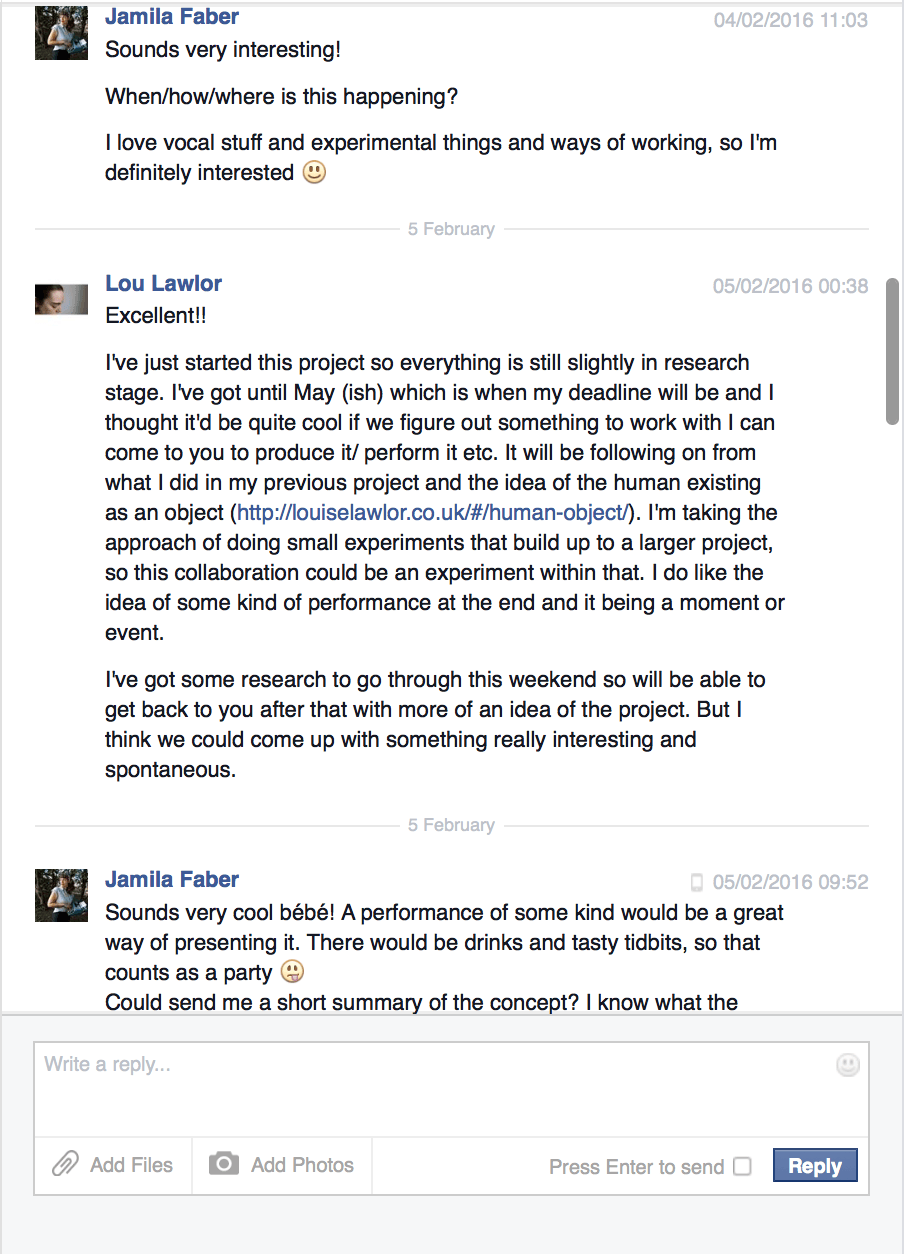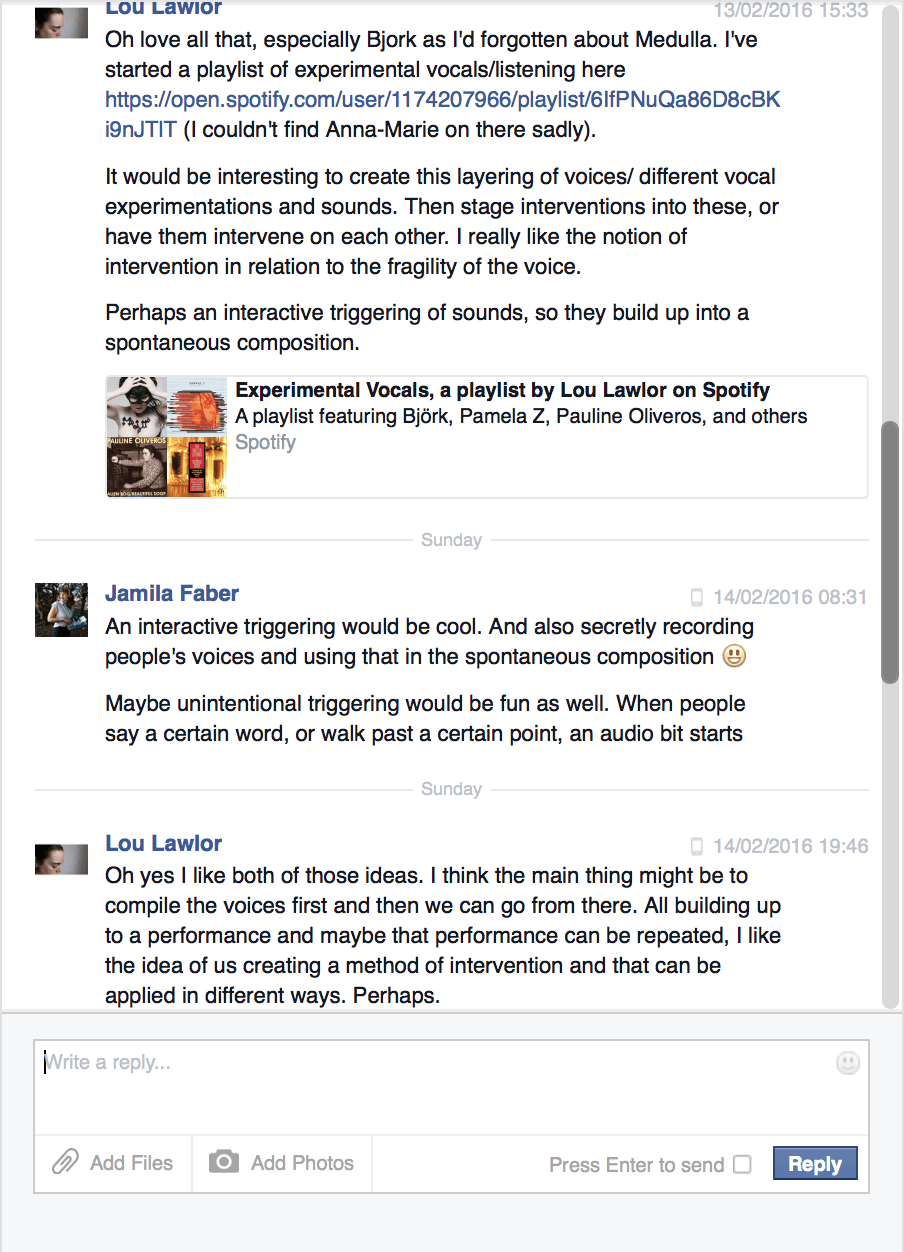Reflections on A Cyborg Manifesto by Donna Haraway
‘A cyborg is a cybernetic organism, a hybrid of machine and organism, a creature of social reality as well as a creature of fiction.’ (Haraway, 2000, 291).
In her manifesto, Haraway posits that the cyborg results from a combination of organism and machine, in the conception of coded devices where we no longer talk of reproduction but rather a form of replication. The points at which organism and machine meet have resulted in a border war, at this point we need to take pleasure in the confusion of this boundary and a responsibility for its construction. The notion of organism and machine in conflict in terms of the spaces in which they exist can become blurred through the use of machinic intervention to confront one with the other, Haraway’s point here is very interesting and can be applied to my current thinking surrounding the border between the voice and machinic intervention to expose its fragility and confront sound with object. Haraway here takes this further to suggest the cyborg illustrates the possibility of ‘a world without gender… a world without genesis… a world without end.’ (Haraway, 2000, 292). Genesis is used here in the sense of origin, or the formation of something as the source, the beginning, the birth. In Haraway’s view the cyborg sets up both a world without beginning and without end, this is explored further in that the cyborg is not a separation from a previous state of unity, from the Mother and the wholeness of organism. In actual fact this previous state of wholeness is a myth, the cyborg skips this stage of unity and as such has no origin story and proposes instead the notion of a world without origin. Therefore suggesting that the process of birth, persistence and end I explored in Project 1 are irrelevant, they are instead reworked. The cyborg is seen as the illegitimate offspring of militarism and capitalism, but as such in being illegitimate they are unfaithful to their origins and origins become inessential. This notion links back to the idea of the voice once isolated and combined with machinic intervention, as an illegitimate offspring that is no longer faithful to the human mother/father. ‘But illegitimate offspring are often exceedingly unfaithful to their origins. Their fathers, after all, are inessential.’ (Haraway, 2000, 293).
‘Late twentieth-century machines have made thoroughly ambiguous the difference between natural and artificial, mind and body, self-developing and externally designed, and many other distinctions that used to apply to organisms and machines.’ (Haraway, 2000, 294).
Haraway sets out some interesting definitions for machine and human, machine is seen as fluid, light, invisible and ‘made of sunshine’ (Haraway, 2000, 294). Whereas the human is seen as opaque, material and heavy, in stark contrast to the machine and has a distinct feeling of obsolescence implied. So, ‘cyborgs are ether, quintessence’ (Haraway, 2000, 294), quintessence can be read in two ways either as prototype, epitome or ideal or as essence, ethos or substance. The notion of cyborg as prototype is particularly interesting, linking back to my work in Project 1 in the creation of a 3D printed object from the human effectively saw the confrontation of organism and machine to create a hybrid where the simulation of consciousness was firmly applied through the machinic. Haraway goes on to discuss the move from reproduction to replication, whereby ‘any objects or persons can be reasonably thought of in terms of disassembly and reassembly’ (Haraway, 2000, 301). This links to the idea of replication through 3D printing and the disassembly of the organic human reassembled through the machine and plastic to the cyborgic. This similar process can be applied to my current project with the voice; communication technologies are crucial tools for re-crafting our bodies to provide the ability for the voice to occupy different spaces in the reassembly of our bodies with machines. Here tool < > myth, instrument < > concept, systems of social relations < > anatomies of possible bodies are permeable boundaries that can mutually be a part of each other. However, Haraway goes on to state that a break down of communication processes causes the system itself to fail to recognise the difference between self and other, ‘a stressed system goes awry; its communication processes break down; it fails to recognise the difference between self and other.’ (Haraway, 2000, 303). From this we can see that the fragility of the voice and the intervention into it causes a break down and as such the voice can no longer recognise the self. If we are to continue the notion of replication, we must be aware that electronics fundamentally mediate a translation (ie mind > artificial intelligence), the use of electronics as part of communications blurs any boundary between organism and machine. This results in mind, body and tool being on intimate terms with the mediator, the tool of electronics thus intimately becomes a part of the cyborgic reassembly of the voice, creating a copy that no longer has an original. ‘Microelectronics is the technical basis of simulacra; that is, of copies without originals.’ (Haraway, 2000, 303). Ultimately Haraway states that in this hybrid of organism and machine, the body doesn’t have to be defined by skin (human) or otherwise defined by this outer layer of biological material. The holism of the organic base isn’t needed for the cyborg to possess intimate components; these variants or mutants can possess gender, sexuality, embodiment and skill without the need of the organic to provide wholeness.
‘Why should our bodies end at the skin, or include at best other beings encapsulated by skin? From the seventeenth century till now, machines could be animated – given ghostly souls to make them speak or move or to account for their orderly development and mental capacities. Or organisms could be mechanised – reduced to body understood as resource of mind. These machine/ organism relationships are obsolete, unnecessary.’ (Haraway, 2000, 314).












































